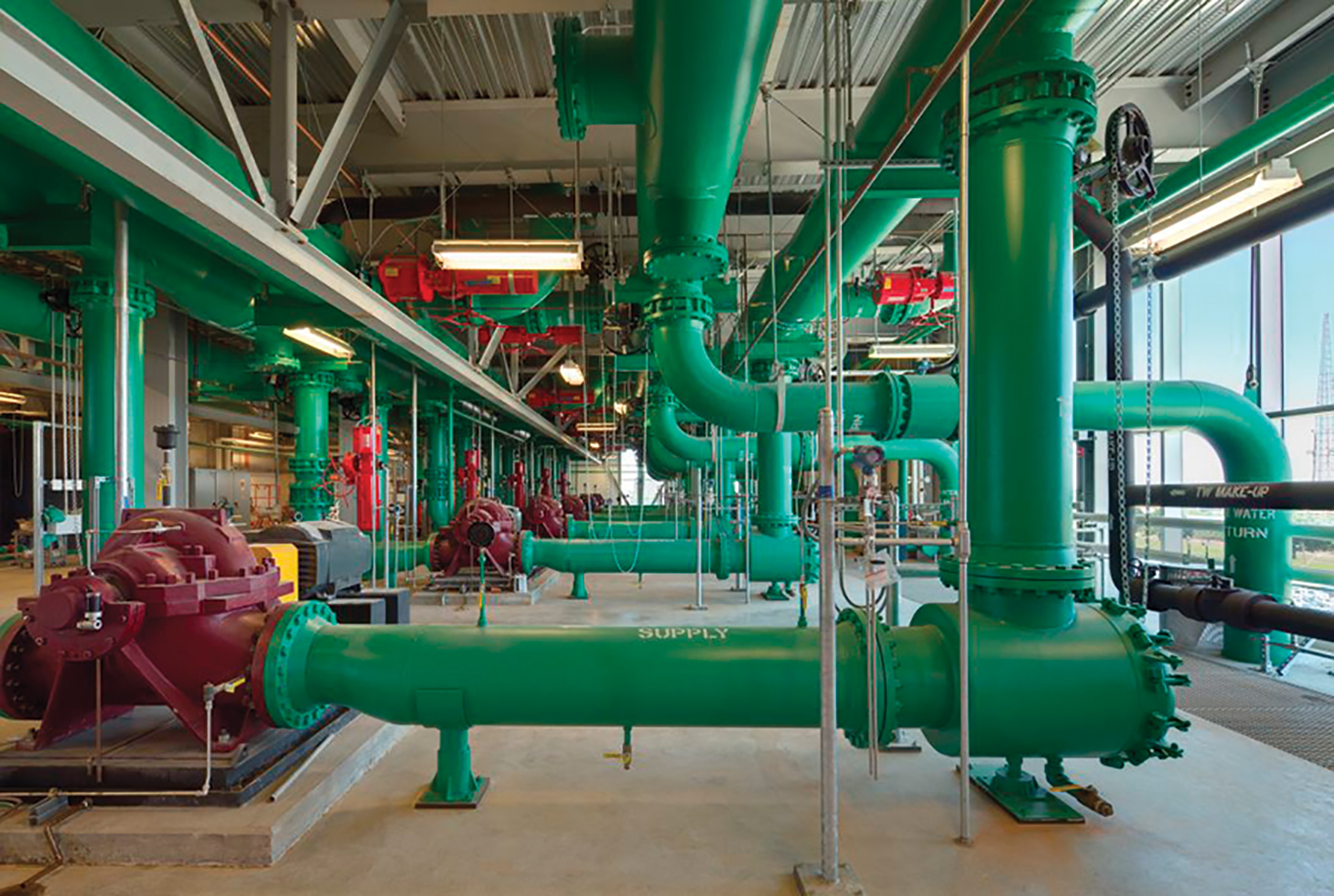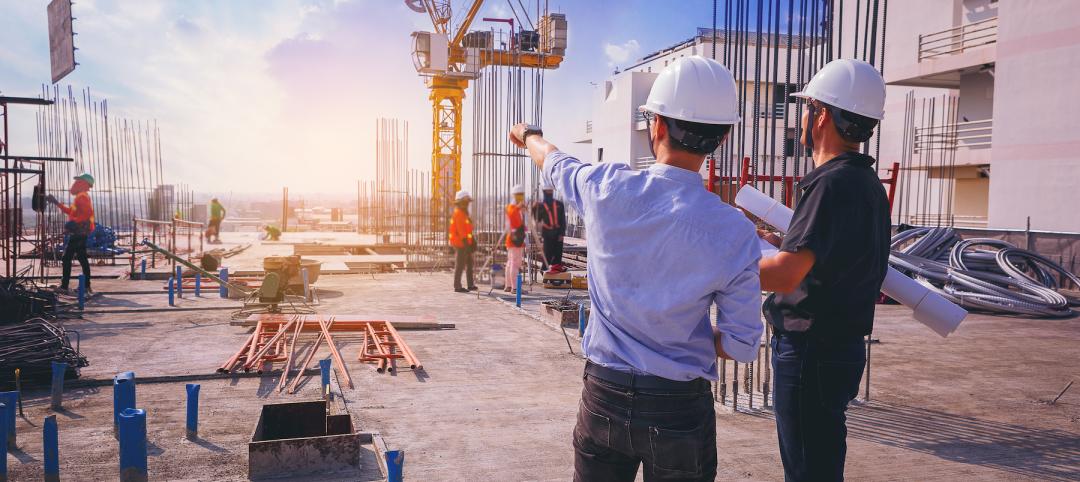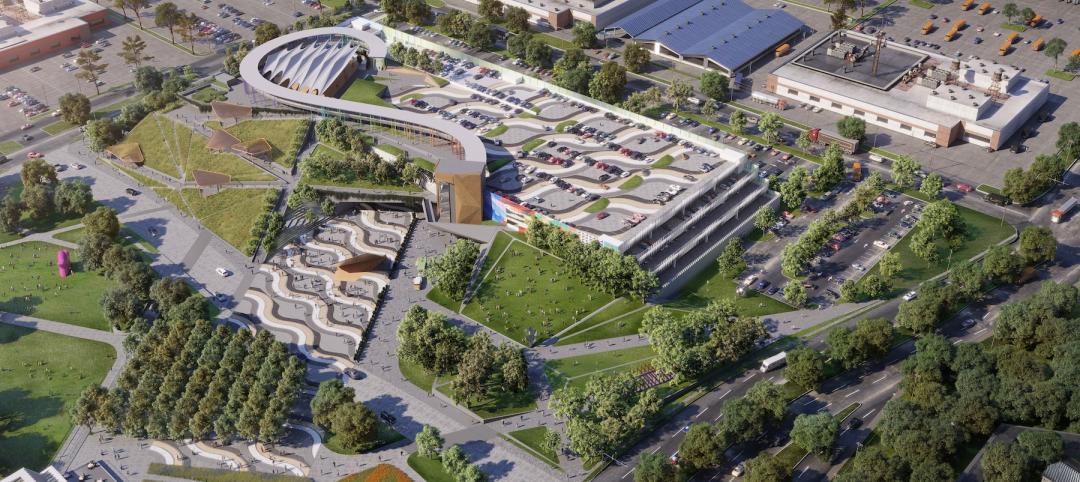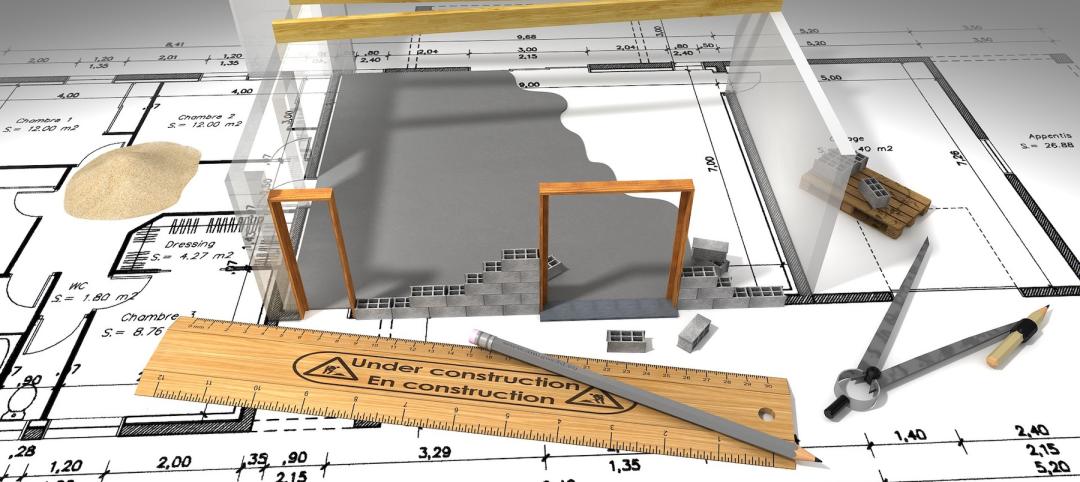When it comes to complex building projects, Building Team member firms that deliver design, engineering, and construction services bring very different perspectives to the job. Design is all about possibilities. Engineering is about rooting those ideas in reality. Construction is about getting the work done.
As a result, when a building moves from design to engineering to construction, inherent hurdles and inefficiencies must be overcome. Change orders create delays and add cost. Accountability and ownership can be ambiguous. Key details can be lost in translation. Yet all the players share the same goal: to create a successful building.
LEARNING OBJECTIVES
After reading this article, you should be able to:
+ DEFINE design-assist, and differentiate the project delivery method from design-bid-build.
+ DISCUSS up to three major benefits of design-assist for the owner/client and the Building Team.
+ LIST the four basic steps for establishing an effective design-assist process.
+ DESCRIBE one or more possible client concerns related to design-assist, and offer a plan of action for addressing these concerns.
EDITOR’S NOTE
To earn 1.0 AIA CES learning units, study the article carefully and take the exam posted here.
Design-assist (DA) is a procurement method by which one or more subcontractors are retained, prior to the completion of design, to assist the architect, engineer, or construction manager in the development of the design and construction documents. This is not always an obvious solution. “Bringing together many different disciplines so early in the process is a bold move, a deviation from the way things have always been done,” says DesignGroup’s Jennifer Horvath.
Let’s take a deeper look at the design-assist process, learn more about the benefits of early, interdisciplinary collaboration, see how DA works, step by step, and how you can put DA into practice.
HOW DESIGN-ASSIST CHANGES THE DESIGN/CONSTRUCTION DYNAMIC
In traditional design-bid-build projects, the design team works independently to design the various systems, with preliminary cost estimates prepared at design milestones. The project owner may engage a CM for preconstruction services to provide insight into the overall cost, sequencing, and constructability. When the design is completed, the construction documents are published and turned over to subcontractors for bidding. Subcontracts are awarded, and the process of coordination, shop drawings, and procurement begins. As discrepancies arise, the design team is called upon to answer requests for information or modify the construction documents, often resulting in delays, change orders, and added cost. Too often, design-bid-build fails to fully capitalize on the strengths of all parties and often creates adversarial relationships among the various entities.
The DA process changes this dynamic. With DA, the Building Team determines how each party can best contribute at each stage and when transitions should occur to maximize efficiency. DA subcontractors typically do not assume design liability; they assist the architect and engineers of record with input as the design develops. They do, however, understand and embrace the project goals and priorities and assume some degree of ownership of the design. In most cases, this results in a reduction in coordination-based RFIs and change orders.
HOW TO SUCCESSFULLY IMPLEMENT DESIGN-ASSIST IN YOUR NEXT PROJECT
Design-assist can be implemented on nearly any construction project regardless of type or size. Its benefits include improvements in design efficiency, cost management, speed to market, and constructability. DA is best leveraged when early engagement of certain subcontractors is most beneficial for the project.
Improved design efficiency. Involvement of DA subcontractors earlier in the design process reduces redundancy inherent in the traditional design-bid-build process and helps subcontractors detect and resolve constructability issues before construction starts. The result is a reduction in design-related RFIs during construction, when the potential for budget and schedule implications is the greatest.
A LATE START STILL SAVES $1 MILLION IN SUBCONTRACTOR FEES
A 100,000-sf stand-alone, 15,000-ton chilled water plant was planned as an unmanned facility to be operated remotely. The structure was steel frame with composite concrete slabs. The skin was architectural precast concrete with some curtain wall and glass.
Four design-assist contractors were needed:
+ Mechanical – Complete package: HVAC, piping, plumbing, and controls
+ Electrical – Complete package: power, lighting, distribution, equipment, and site lighting
+ Structural steel
+ Architectural precastA “best-value” selection process was used to select the subcontractors: A request for qualifications was issued; then, the owner, the architect, and the CM narrowed each trade down to the three most qualified firms. These were issued an RFP asking for details about their team, their approach to the work, and an initial GMP (iGMP) based on the available design documents. The responses to the RFP were reviewed, interviews were held, and the final selection was made. The four firms were brought on board at the end of design development.
All four contracts were initially issued as cost-plus with a GMP based on the submitted iGMP value. At the end of the Construction Document period the subcontractors submitted updated GMPs. At that point the Building Team decided to convert the steel and precast work to a lump-sum contract. The mechanical and electrical contracts continued as GMPs throughout construction.
In retrospect, the decision to incorporate DA subcontractors at the end of Design Development may not have been the best. Due to the complexity of the project (especially the MEP systems), doing so still proved beneficial, but it might have been better to have had the subcontractors on board at the beginning of Design Development.
All four contractors were able to stay within the original project budget. The mechanical and electrical subcontractors returned more than $1 million in savings to the owner at the end of the project.
The takeaway: Care should be taken during the subcontractor selection process to understand how familiar a subcontractor is with the process of managing a cost-plus contract.
Design-assist also creates a collaborative environment for the design and construction team to work toward a common goal of producing the best building for the owner. Communication is improved throughout the project by ensuring that all members of the Building Team fully understand the goals and priorities of the project.
When goals and priorities are established early in the design phase of the project, the frequency and severity of disputes is often reduced, or disputes are resolved more easily because of the relationships formed through the design-assist process.
Greater accuracy in pricing. Early collaboration with DA subcontractors provides the Building Team with more accurate market pricing earlier in the design process, when the cost of making changes is usually less than during construction. DA subcontractors can provide feedback to the team on materials with high price volatility; this enables the project team to lock in pricing and make decisions faster.
The result: “Project owners can have more confidence in estimated costs,” says Turner Construction’s Kurt Smith. “Real-time cost feedback occurs throughout design and construction phases.”
Faster speed to market. Including DA subcontractors in the design phase also allows construction coordination to begin during design and simplifies the process of early equipment purchasing. By involving the subcontractors earlier than in traditional delivery methods, greater collaboration of the DA team can speed up the schedule. Design-assist ensures a level of understanding of the established project goals and priorities. This minimizes overall construction time by pre-establishing the project team relationships before the start of construction, by reducing the time for the construction team to get up to speed, and by minimizing the time delays associated with RFIs.
More efficient constructability. Incorporating DA subcontractors into the team allows project constructability and phasing difficulties to be more clearly defined during the design process and incorporated into the construction documentation. The team can identify and consider more efficient construction methods, such as prefabrication, which may improve the quality of the completed project and result in more efficient and economical construction.
HOW DESIGN-ASSIST WORKS IN PRACTICE
There are four basic steps for establishing an effective design-assist process:
1 ] Selecting DA subcontractors
Once the owner and project team decide the project could benefit from design-assist for select trades, the procurement process can begin. In design-assist projects, careful planning and execution of the procurement process is critical. All team members must agree on the approach and be satisfied with the outcomes.
DA subcontractor trades. Building trades associated with DA (see box) typically represent the significant contributors to costs, the greatest areas of risk, and the most complex and critical aspects of the design.
Two forms of selection process. In most cases, Building Teams elect to use an expedited process in which the CM (or design-builder), the owner, and the design team issue a request for proposals to prequalified subcontractors, which are then short-listed and interviewed. The DA subcontractor selection can also follow a two-step process: 1) request for qualifications (RFQ), followed by 2) RFPs and interviews for the short-listed subcontractor firms.
DA subcontractor selection should be value-based. Selection criteria typically includes qualifications, experience, past performance, fees, and a preliminary estimate.
Start the selection process early. Selection of the DA subcontractors should take place early in the design and preconstruction phase. The optimal timing may vary based on the specific trades involved, the preferences of the owner and Building Team, and the project’s complexity. Selecting subcontractors between the latter stages of schematic design (SD) and the end of the design development (DD) documents has proven successful for many design-assist projects.
Selection should take place before the design reaches a level of completion at which significant changes to incorporate the subcontractors’ input would delay the project’s schedule, increase the budget, or lead to significant rework.
Projects with a phased or fast-track design schedule may need to consider additional factors for when to procure subcontractor services. For example, if an office building project is being designed and built in two phases—core and shell and interior fitout—the interior design will likely lag months behind that of the core and shell; it would not make sense to bring on DA subcontractors for interior trades until the interior design has started and sufficiently progressed to provide an initial basis of design.
ADDRESSING CLIENT CONCERNS ABOUT DA
Design-assist is not without potential drawbacks. Here are some common concerns—and how your Building Team can reassure clients that DA is worth considering.
The most common form of contract used in DA scenarios is cost plus, typically with a guaranteed maximum price. GMP is most effective because the level of design at the time of procurement is generally not sufficiently complete or detailed to be able to get realistic lump-sum quotes.
By utilizing a cost-plus GMP, the subcontractors who are completing RFPs can provide a complete cost for their scope of work, including filling holes in the design that will be necessary based on their experience. This also gives the selection team an indication of how familiar the subcontractor is with the type of work, which can further aid in procurement.
2 ] Executing the plan of collaboration
The team must follow a clear design-assist execution plan. The plan should define team roles and responsibilities, identify required software, and establish transition points to ensure adequate staffing and coordination throughout the project.
Early teamwork among the entire Building Team helps to establish a cohesive, committed, and trusting team where all parties understand the priorities and goals of the project. Collaboration fosters mutual respect for the value that each party contributes. This trust allows decisions to be made more efficiently because neither side needs to be defensive or wary of the other’s intentions.
DA subcontractors brought on early in the design process provide input on constructability, maintainability, and cost estimation. While the design team understands how the building and its systems are to operate, it must rely on the subcontractors’ knowledge of construction techniques, equipment capabilities, and the cost of materials for the actual execution. As design decisions are considered, subcontractors can provide real-time feedback that enables the team to accurately track where the project is compared to the overall budget and schedule.
HOW ONE D-A SUBCONTRACTOR HELPED CUT COSTS AND SAVE TIME
Anew, freestanding, 500,000-sf, 200-bed hospital was intended by its owner to be a model for other facilities within its national sys- tem. The six-story building was designed as a steel frame structure with a curtain wall enclosure of glass, composite-wood panels, and porcelain tile panels.
An architectural curtain wall subcontractor was brought onto the team halfway through Design Development. The architect and the DA subcontractor began the process in design charrettes to advance the exterior detailing, make decisions about materials, and evaluate con- struction logistics. Beginning in DD, they exchanged the model on a weekly basis to allow for quick experimentation with options.
Early dialogue and the ability to explore options based on architectur- al, construction, and materials considerations led to a 20% cost savings for the exterior wall system and trimmed the installation schedule of the enclosure by eight weeks.
Sharing the complete BIM model also helped ensure that the innova- tive exterior materials used were maintaining the site parameters set by the client. The BIM model also proved valuable in explaining a rain- screen exterior wall system to regulatory authorities who had no experi- ence with such a system.
The need to submit eight separate document packages over the course of seven months necessitated frequent and focused coordina- tion sessions among the engineers, landscape designers, and design team. It helped ensure an accurate set of documents and coordination sessions that were smoothed by universal access to the model and the information drawn from it.
3 ] Transitioning responsibility for the model
During the development of construction documents, an interim milestone should be established to transition responsibility for the model development from the design team to the DA subcontractors. This model transition is one of the most critical junctures to define in the DA process.
This transition can occur at various times within the design timeline. Traditionally, it occurs from the end of schematic design (SD) to the end of design development (DD) drawings, when the construction documents are 30–50% complete. The timing should ensure that all major decisions have been made and clearly conveyed to the DA subcontractors. Explicitly communicating the expected condition of the model and development of the design prior to handoff ensures that the DA subcontractors are prepared for the work that remains.
Subcontractors are used to working from completed documents, so understanding the extent of development that remains through the end of construction documents can be difficult for them. How the design team and the DA subcontractors communicate with each other after the transition should be determined in the DA execution plan.
4 ] Design responsibility—sealing the documents
After the transition, the design team typically maintains responsibility for the major system and assembly design decisions and ultimately takes responsibility for the design by sealing the documents for permit application. Subcontractors will update their contribution to the model, with oversight by the design team. This allows the DA subcontractors to begin generating system details based on their expertise. The process eliminates unnecessary information, such as excessive detailing or modeling-specific information (e,g,, dimensions or tags). In some projects, the DA subcontractors are responsible for generating the model details and finalizing the permit drawings.
Having a shared design platform in your DA project can be very valuable. Most current software used by architects and engineers is different from that used by subcontractors to fabricate their components. Utilizing a common platform like Revit can provide the flexibility needed during design, while incorporating some of the detail needed for the fabrication software. Translator programs can be used to feed information between programs instead of duplicating model development efforts.
This streamlined approach also allows many coordination issues to be addressed earlier in the process. Better dimensional accuracy of the building components can enable component prefabrication, improve space planning, and enhance early selection of critical equipment. This requires earlier decision making from all key stakeholders, but can lead to stronger commitment to decisions.
Early collaboration also increases the opportunity for innovation and prefabrication by incorporating constructability recommendations based on subcontractors’ expertise. Early reliability of the design decisions allows the team to direct their energy toward improving constructability issues.
MAXIMIZING DESIGN-ASSIST’S PAYOFF
While design-assist can have a significant, positive impact on design efficiency, cost, speed to market, and constructability, these benefits can be especially acute in high-risk, complex projects, especially those where sophisticated systems, confined site conditions, accelerated schedules, phased construction, and advanced materials and equipment procurement methods are in play.
Project risk is generally associated with undefined circumstances that carry significant cost implications. The risks of the design and construction process can be mitigated through the DA process by reducing uncertainty about the cost of materials, performing real-time cost estimating, more clearly communicating design intent to the contractors, and providing constructability and phasing feedback earlier in the design process.
A project with an accelerated schedule can also benefit from design-assist. The early participation of the design-assist team members allows for the prepurchase of materials and identification of materials and systems with long lead times. As the complexity of a project increases, interdependency of the trades becomes more and more critical. Determining which design-assist contractors to add to the team during the design phase should be based on the complexity and risk factors for the specific project.
About the Ohio Construction Transformation Consortium: The Ohio Construction Transformation Consortium represents a cross-section of construction industry disciplines—architects, engineers, contractors, subcontractors, vendors, and planners. Ohio CTC’s goal is to help the construction industry achieve greater efficiency, productivity, and success by examining how projects are performed and developing strategies and guidelines for doing them better. The group provides white paper development, speakers for conferences, and client information sessions. More information: OhioCTCGroup@gmail.com, or call Tom Garske (614-456-0951).
Ohio CTC Design-Assist Team Experts: Tom Garske, LEED AP, Regional Manager, Whiting-Turner Contracting Co.; Jennifer Horvath, Principal, DesignGroup; Ed Keener, PE, LEED AP, Partner, Korda Engineering; Jeff Ortman, PE, Vice President, HAWA Inc.; Kurt Smith, Regional Preconstruction Manager, Turner Construction Co.; Monica Wangler, AIA, LEED AP, Senior Associate, NBBJ; Randy Sleeper, CEO, Bruner Corp.; Stephen Metz, PE, LEED AP BD+C, President, SMBH, Inc
Related Stories
Building Team | Jul 6, 2022
Buro Happold selects Jennifer Price for top role, US Managing Director
Buro Happold, a world-class practice of 2,200 engineers and consultants, has announced the appointment of Seattle-based Jennifer Price as US Managing Director and Partner.
University Buildings | Jul 6, 2022
Wenzhou-Kean University opens a campus building that bridges China’s past and future
After pandemic-related stops and starts, Wenzhou-Kean University’s Ge Hekai Hall has finally begun to see full occupancy.
Security and Life Safety | Jul 5, 2022
What AEC firms should look for in a cybersecurity partner
When looking for expert partners in cybersecurity, AEC firms will find quite a lot of companies claiming to be at the forefront of modern threats. Here are five key points to look for when choosing a cybersecurity firm.
Performing Arts Centers | Jul 5, 2022
Tour the new Patricia Reser Center for the Arts in Oregon
This month, the community of Beaverton, Oregon, welcomed a new haven for artistic expression with the opening of Patricia Reser Center for the Arts (The Reser).
Building Team | Jul 5, 2022
Dallas’ Fair Park, home to the State Fair of Texas, will place a park atop a new parking garage
A registered National Historic Landmark, Fair Park is the 227-acre home to the Texas State Fair and various cultural institutions in Dallas, Tex.
Market Data | Jul 1, 2022
Nonresidential construction spending slightly dips in May, says ABC
National nonresidential construction spending was down by 0.6% in May, according to an Associated Builders and Contractors analysis of data published today by the U.S. Census Bureau.
Building Team | Jul 1, 2022
How to apply WELL for better design outcomes
The International WELL Building Institute (IWBI) cites attracting top talent, increasing productivity, and improving environmental, social or governance (ESG) performance as key outcomes of leveraging tools like their WELL Building Standard to develop healthier environments.
Building Team | Jul 1, 2022
Less portable potty, more movable restroom
Some contractors are packing up their portable potties and instead using the H3 Wellness Hub.
Building Team | Jun 30, 2022
Adopting a regenerative design mindset
To help address the current climate emergency, a new way of thinking across the entire architecture, engineering and construction industry is imperative.
Market Data | Jun 30, 2022
Yardi Matrix releases new national rent growth forecast
Rents in most American cities continue to rise slightly each month, but are not duplicating the rapid escalation rates exhibited in 2021.



















